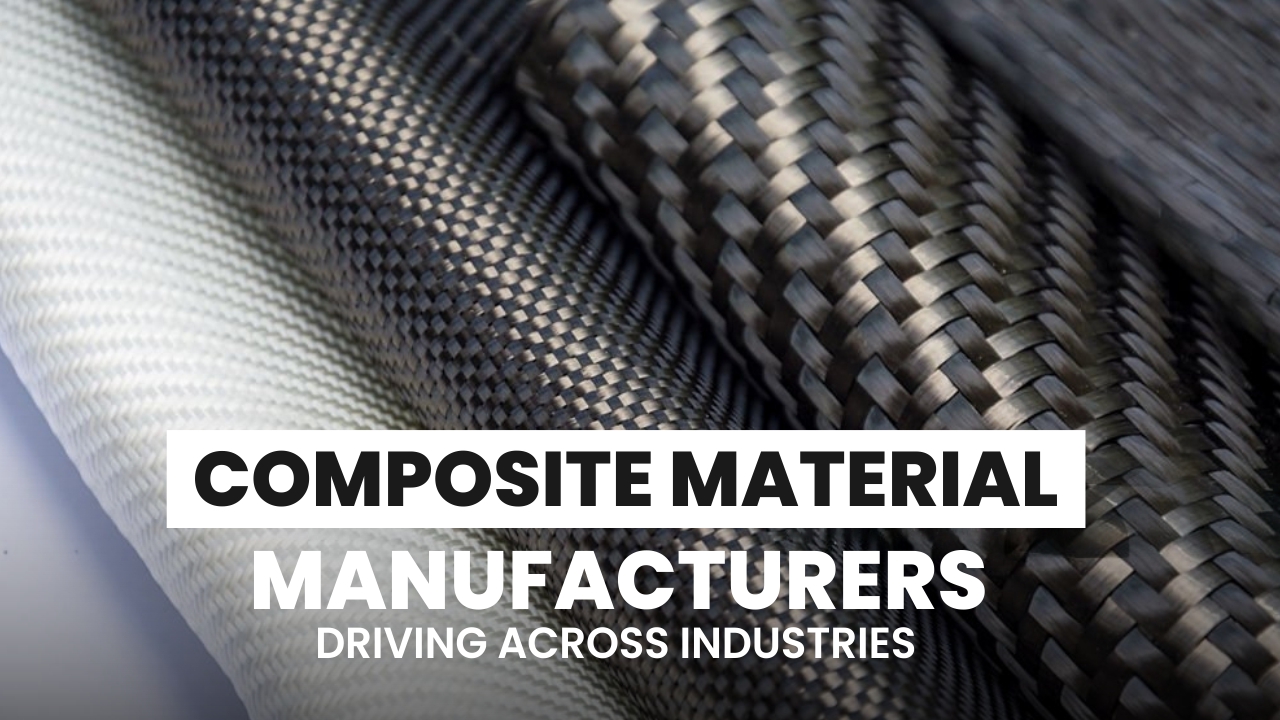
Enthusiasts who are curious to discover the world of composite materials will find here a comprehensive understanding of this engineered material. This innovative material has infiltrated into aerospace, automobile, energy, marine, general, and civil engineering sectors, revolutionising methodologies and techniques. The transformative impact and potential of these materials are making these materials useful across diverse industries. The mastermind behind these innovative materials, composite material manufacturers is gearing up to set the stage for a future that is built on efficient, more sustainable, and high-performing materials. Known for their strength, durability, and lightweight properties, these materials have revolutionized various industries, from aerospace to automotive to construction, and manufacturers of these materials are driving advancement across multiple industries.
The composite material industry is continually evolving, driven by the need for more efficient, durable, and sustainable materials. Key trends include:
Sustainability – Composite materials manufacturers are increasingly focusing on eco-friendly composites made from renewable resources and recycled materials.
Advanced Manufacturing Techniques – Manufacturers are adopting innovations like automated fiber placement (AFP) and additive manufacturing (3D printing) to enhance production efficiency and material performance.
Nanocomposites – The incorporation of nanomaterials, such as carbon nanotubes, is leading to composites with unprecedented strength and electrical conductivity.
Smart Composites – Integration of sensors and smart technologies into composites is enabling real-time monitoring of structural health and performance.
Composite materials have been on the upsurge for the last few years and the market of these materials has crossed over $38 billion. However, it is just a fraction of the value composite materials bring across diverse industries, and this sector as a whole along with products has now crossed $107.4 billion. Composite materials play a key role in production and lead to advancement across diverse industries. The significance of these materials across diverse industries is discussed below:
The aerospace industry always prefers lightweight and durability and composite materials turn out to be more of a reality than ever before. Carbon fiber has been the key material within this sector and its usage has grown by 290% since 2012. Leading aircraft manufacturers are moving their production initiatives to composite materials due to their lightweight nature combined with high strength that contributes to fuel efficiency and enhances the overall performance of aircraft.
In the marine sector, composite materials are utilized for boat hulls and other components due to their superior resistance to water, salt, chemicals, and other erosive substances. Due to this, composite materials are firmly rooted in the marine industry, ensuring durability in harsh marine environments. According to the National Marine Manufacturers Association, boat sales have been on the high in recent times.
Composite materials offer design flexibility, allowing the creation of streamlined and fuel-efficient vehicles. These materials are primarily used in body panels, chassis components, and interior parts, leading to the overall efficiency and aesthetics of automobiles.
Composite materials having excellent insulating properties are used in electronic components, providing protection and essential electrical insulation. This further enhances the safety and performance of electronic devices.
Composite materials are increasingly used in the sports industry because of their ability to customize mechanical properties. This makes them ideal for sporting goods like golf clubs, tennis rackets, and bicycles. Because of the customization ability of the materials designers can optimize performance characteristics for various sports equipment.

In chemical processing, composites are favoured for their resistance to corrosive chemicals. This resistance ensures that equipment maintains structural integrity even in the most challenging environments, leading to longer lifespans and improved safety.
Certain composite materials are bio compatible, making them suitable for use in medical devices, implants, and prosthetics. Their compatibility with biological tissues ensures safety and effectiveness in medical applications.
Composite material is the obvious choice for many industries looking for innovation and is soon expected to make its mark in emerging industries. These materials are sure to lead to better production standards, and longer product life at reduced cost. With a focus on sustainable practices, composite materials will be a natural fit for the manufacturing sector of the future. Some potential future developments include:
Next-Generation Aerospace Components – With the ongoing demand for lightweight, fuel-efficient aircraft, composite materials will play a critical role in the next generation of aerospace technology.
Electric Vehicles – With automotive industry shifting towards electric vehicles, the need for lightweight, high-strength materials will drive innovation in composites.
Infrastructure Renewal – Aging infrastructure around the world will benefit from durable, corrosion-resistant composite materials, ensuring longer lifespans and reduced maintenance costs.
Composite material manufacturers are at the forefront of technological innovation, driving advancements across multiple industries. Their work not only enhances product performance and sustainability but also paves the way for future innovations. As you explore the world of composites, you’ll discover how these materials and their manufacturers are shaping the future of engineering and design.
Welcome, fellow enthusiasts, to another deep dive into the captivating world of advanced composites! Today, we embark on a journey through the intricate web of materials science, engineering marvels, and ground-breaking innovations that shape our modern world.
Imagine a bustling laboratory, filled with the hum of machinery and the crackle of creativity. Engineers and researchers huddle around a gleaming carbon fibre composite, discussing its potential applications in aerospace, automotive, and beyond. This is where the magic of advanced composites begins. Rockman AC is a pioneer auto component manufacturing company offering world-class advanced composites solutions for diverse industries. The company procure top-quality material from reliable sources to manufacture precision-engineered auto components.
At its core, advanced composites represent a fusion of materials with distinct properties, meticulously engineered to surpass the limitations of traditional materials. Carbon fibre, glassfibre, and aramid fibers are woven together with resins like epoxy or polyester, forming a matrix that boasts unparalleled strength, durability, and lightweight features.
But what sets advanced composites apart is not just their raw strength, but their versatility. They can be tailored to meet the specific requirements of almost any application, from sleek Formula 1 cars hurtling around a racetrack to towering wind turbines harnessing the power of the breeze.
Let’s delve into the realm of aerospace, where advanced composites reign supreme. Imagine an aircraft soaring through the skies, its wings crafted from layers of carbon fibre composite. Not only does this reduce weight and fuel consumption, but it also enhances aerodynamic efficiency, pushing the boundaries of flight to new heights.
However, the impact of advanced composites extends far beyond the stratosphere. On the ground, automotive manufacturers are harnessing the power of these materials to revolutionize the way we drive. Lightweight advanced composites are replacing traditional steel and aluminum components, enhancing fuel efficiency, performance, and safety in vehicles ranging from supercars to everyday commuters.
Yet, the true beauty of advanced composites lies not just in their strength but also in their sustainability. As the world grapples with the challenges of climate change and environmental degradation, these materials offer a beacon of hope. By reducing weight and improving efficiency, they help minimize carbon emissions and pave the way toward a greener, more sustainable future.
However, like any technological marvel, advanced composites come with their own set of challenges. Manufacturing processes can be complex and costly, requiring specialized equipment and expertise. Quality control is paramount, as even the smallest imperfection can compromise the integrity of the final product. And while advancements continue to push the boundaries of what is possible, there is always more to learn, more to explore, more to innovate.
As we conclude our journey through the world of advanced composites, let us marvel at the ingenuity of the human spirit. From the depths of the laboratory to the heights of the sky, these materials represent the culmination of centuries of scientific inquiry, technological advancement, and human creativity. They are a testament to our endless quest for knowledge, our relentless pursuit of progress, and our boundless imagination.
So, as we come to the end of the exploration of advanced composites, let us carry forth the lessons learned and the wonders discovered. For in the world of materials science, as in life itself, the journey is as exhilarating as the destination. Until next time, keep dreaming, keep innovating, and keep pushing the boundaries of what is possible.